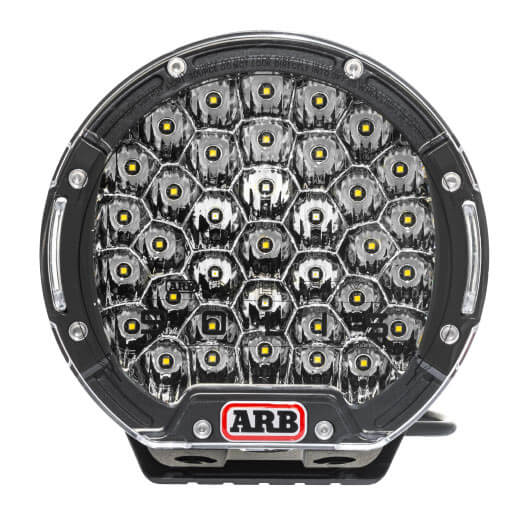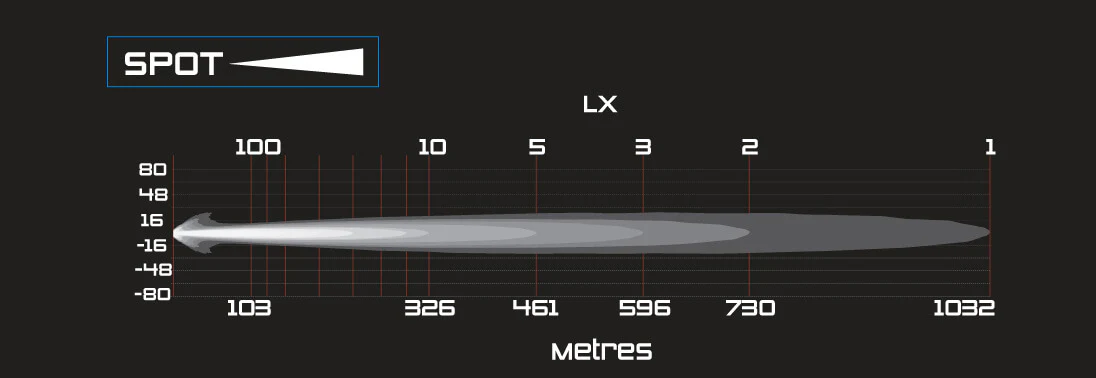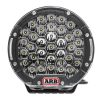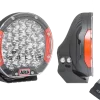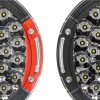ARB Intensity Solis Driving Light – Flood
$488.00
A new Intensity of driving light. Not just a remarkable performer, Intensity Solis driving lights represent a value proposition that is worth considering if you’re looking to add some additional driving lights to your vehicle.
Filled with features, Intensity Solis driving lights are available in a Spot or Flood beam which come with interchangeable red and black die-cast side bezels. New to the intensity range is the Solis’ 5-stage dimmability function, while the introduction of a highly tuned single-piece reflector and 165 watts of OSRAM LED performance bring it to the top of the class in light output.
SPECIFICATIONS
| Input | 10 – 30V |
| Power | 165 W |
| Current Draw | 12.4A @ 13.2V |
| Output – Raw | 18,178 lumens |
| Output – Effective | 8,333 lumens |
| 1 Lux Reading | 729m |
| Spread | 11 degrees |
|
Input Cable Length
|
450mm |
|
Operating Temperature (°C)
|
-40°C to +65°C |
|
Colour Temperature
|
5700 Kelvin |
|
Weight
|
3.3kg (7.27lbs) |
|
Connector
|
4-pin AT – waterproof plug |
|
Dimensions (mm)
|
225mm (w) x 220mm (h) x 120mm (d) |
|
Warranty
|
<p>3 Years</p> <p> </p> |
Spot, Flood or a Combination? How you set up your driving lights should reflect the type of driving and terrain you are driving in.
In areas of wide open land and fast roads, a set-up of two spot lights will give you the best throw of light reaching as far down those long straight roads as possible.
For drivers who are predominantly in heavy bush with lots of winding roads a set-up of two flood lights will fill the foreground, giving you great visibility to the side of the roads where roos like to hide and through the next close corner.
For most drivers, however, the combination of one spot (driver’s side) and one flood provides the best of both worlds. The single spot throws a strong direct beam down the road over 1km, while the flood beam fills the foreground and roadside what is often considered the optimal driving light pattern and output.
LIGHT PROFILE
While the Solis’ light output figures are impressive, what the light really offers the driver is so much greater!
The ultimate goal when designing a driving light is to get two light patterns, one spot and one flood, that offer light where you actually need it. To be most effective, a driving light needs to light the areas of the road and surrounds that match the terrain and driving style. Your driving lights need to be effective either as a matching pair (of spots or floods) or as a combination (one spot and one flood). Creating a light pattern that shines the furthest doesn’t always mean the light is useable – let alone optimal.
Driving lights need to have good central light and shouldn’t have harsh edges, but rather a good feathering of light that bleeds off. Additionally, the light should not be too white as it can cause additional eye strain for the driver, nor should the light throw too much intensity onto the foreground directly in front of the vehicle.
SQUATTING DESIGN STRENGTH
The squat shape of the new light better suits bull bar pan mounting and helps with lowering the centre of gravity of the lights, making them more stable with less oscillation and vibrating which puts less stress on light and bull bar mounting components (including tabs where applicable).
The Solis light is mounted in an all black, vertical-pivoting adjustable, cast aluminium cradle.
Looking at the side profile, ARB engineers have shaped the heat sink casting with a narrower section at the top of the light and a wider section towards the base. The result? A large light which fits a wide variety of applications with more room to fit in front of big tubes, like what is used on ARB Summit Sahara bull bars.


